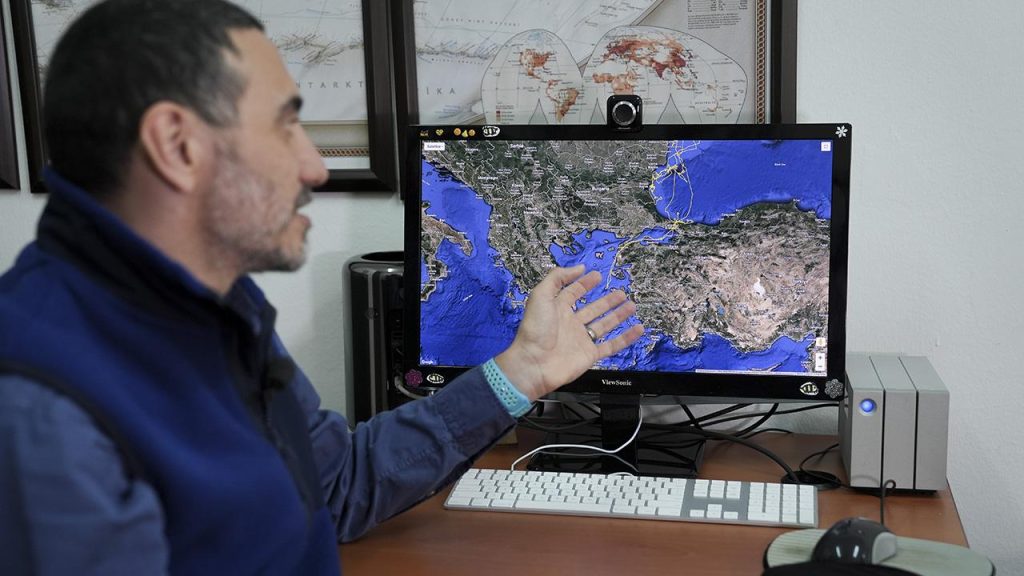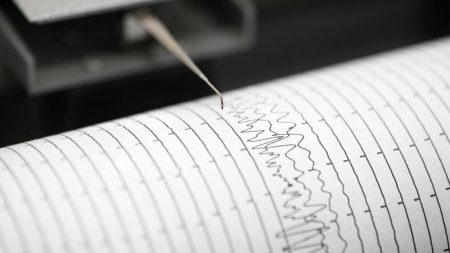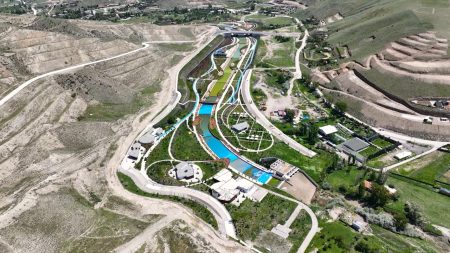A collaborative study has been initiated by academics from various institutions as part of the “Conservation of Shearwaters in the Mediterranean Basin and Black Sea” project, led by the Boğaziçi University Institute of Environmental Sciences with the support of TÜBİTAK. The team used next-generation genomics, acoustic, and GPS-GSM tracking methods to study shearwater birds in the Mediterranean and Black seas. In February, they set up a 50-meter transparent net between two boats in the Istanbul Strait, carefully rescuing shearwater birds caught in it, measuring their size, weight, and taking blood samples.
The academics attached satellite transmitters the size of matchboxes to the back feathers of the birds, reporting their external characteristics. Released back into the wild after the procedures, the birds were then tracked in real-time using a computer system. By entering a special code into the system, the map showed the routes marked by yellow lines where each numbered bird gave signals, allowing them to determine if the birds caught at the same location and fitted with devices were using the same migration route.
Professor Dr. Raşit Bilgin, from the Boğaziçi University Institute of Environmental Sciences, explained that the shearwater birds in Turkey have breeding colonies in the Western Mediterranean and Aegean Sea, and they are researching the kinship relations of these birds with shearwater birds in the Istanbul Strait. By placing recording devices in areas where shearwater birds are present in Seferihasar, Gökçeada, Fethiye, Olimpos, and Kaş, they aim to identify breeding colonies by capturing the sounds of these birds during the breeding season, indicating the need for special protection areas.
Emphasizing the endangered status of shearwater birds, Bilgin mentioned that they aim to contribute to the conservation of these birds in Turkey by sharing the information obtained from the project with the Ministry of Agriculture and Forestry to develop strategies for their protection. Despite initial unsuccessful efforts to capture the birds in the first two years of the project, an effective method was found during the third year by collaborating with other universities planning similar projects, leading to the successful capture of the birds.
Bilgin explained that the high-speed nature of shearwater birds, reaching speeds of up to 70 kilometers per hour, makes capturing them nearly impossible. By modifying a method used 30 years ago by TÜDAV’s Asaf Ertan, they were able to successfully capture around 30 shearwater birds using a net stretched between two buoys, a large boat on one side, and a zodiac boat on the other. They closely monitor the birds’ locations daily through the system map, and the transmitters attached to the birds’ backs are expected to naturally fall off after three months of tracking.
Observing that the birds travel nearly 500 kilometers a day and reach speeds of up to 70 kilometers per hour, the researchers noted the unique behaviors displayed by the birds. Based on the tracked data, the birds have predominantly signal in the coastal areas of Western Black Sea and Sivastopol in Ukraine, while not venturing to the Eastern Black Sea shores. The researchers infer that the birds prioritize efficiency in seeking nourishment in nearby areas, avoiding longer distances that require more energy expenditure. They also mentioned the absence of data indicating breeding colonies along the Black Sea coasts, highlighting the ongoing collection and analysis of data to determine the birds’ sex and kinship relations, which will be reported at the end of the project.















